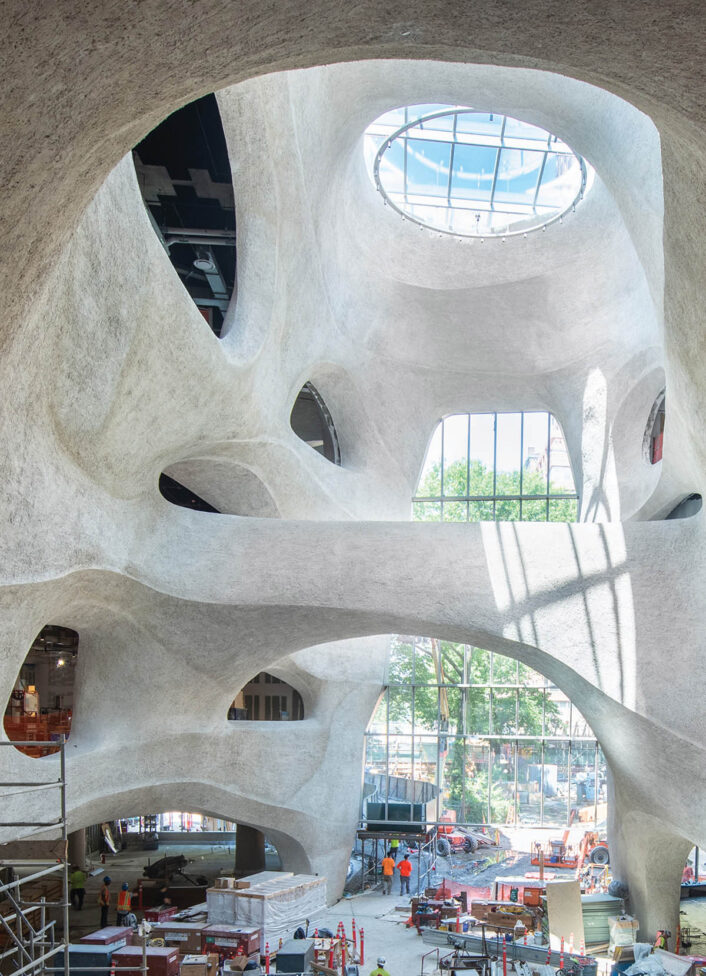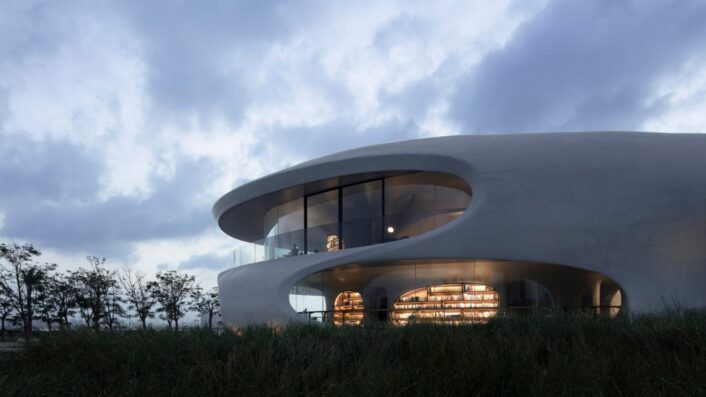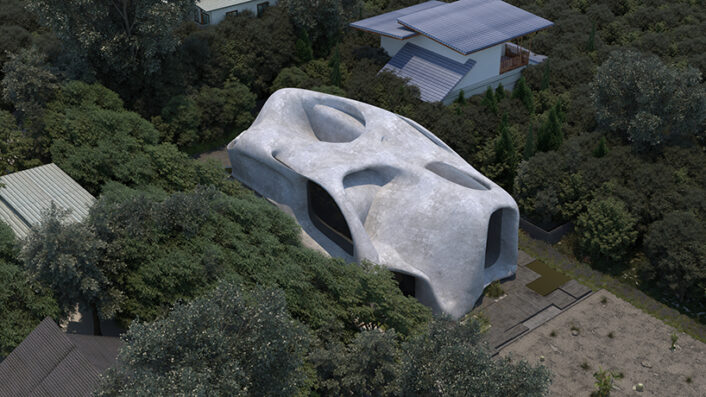Architecture
The story behind Binishells
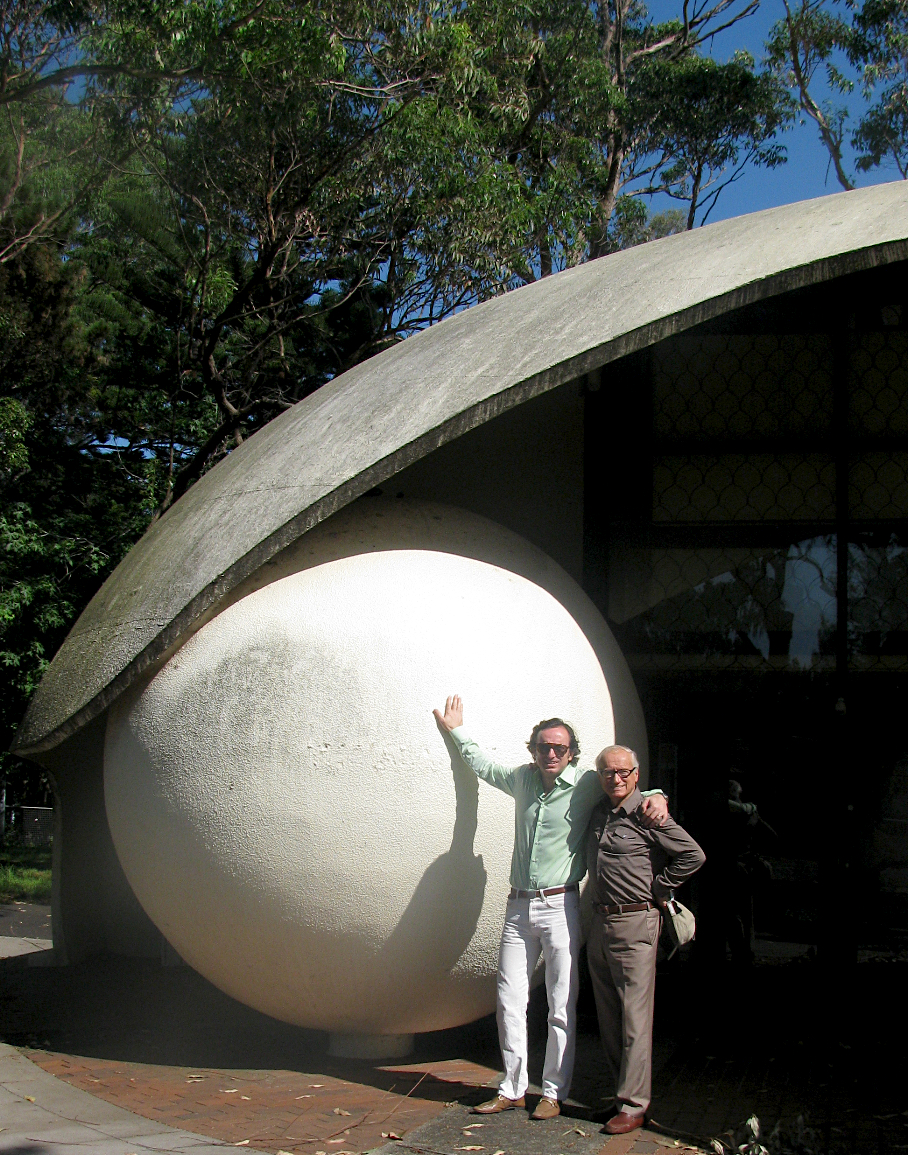
Nicolò and Dante Bini in front of the Binishell School in Narrabeen, Australia.
Image courtesy of: Art Net (photograph courtesy of: Nicolò Dante)
Those of us of a certain age might remember those inflatable domes where people would play tennis in the winter. Often called “tennis bubbles,” these air-supported structures were a way to play tennis under an inflatable roof… when the weather outside wasn’t cooperating.
Similarly, in the 1970s, Australia was full of “soap bubble structures” courtesy of Dante Bini… the creator of Binishells. Invented by the Italian industrial designer, the form was a way to quickly and relatively inexpensively provide shelter. Bini had (courtesy of The New York Times Style Magazine) “discovered that by topping a nylon-coated neoprene air bladder with wet steel-reinforced concrete, then slowly inflating it, he could make- in an hour or so, about the time it takes for the material to cure- a naturally aerodynamic and durable thin-shell bungalow.”
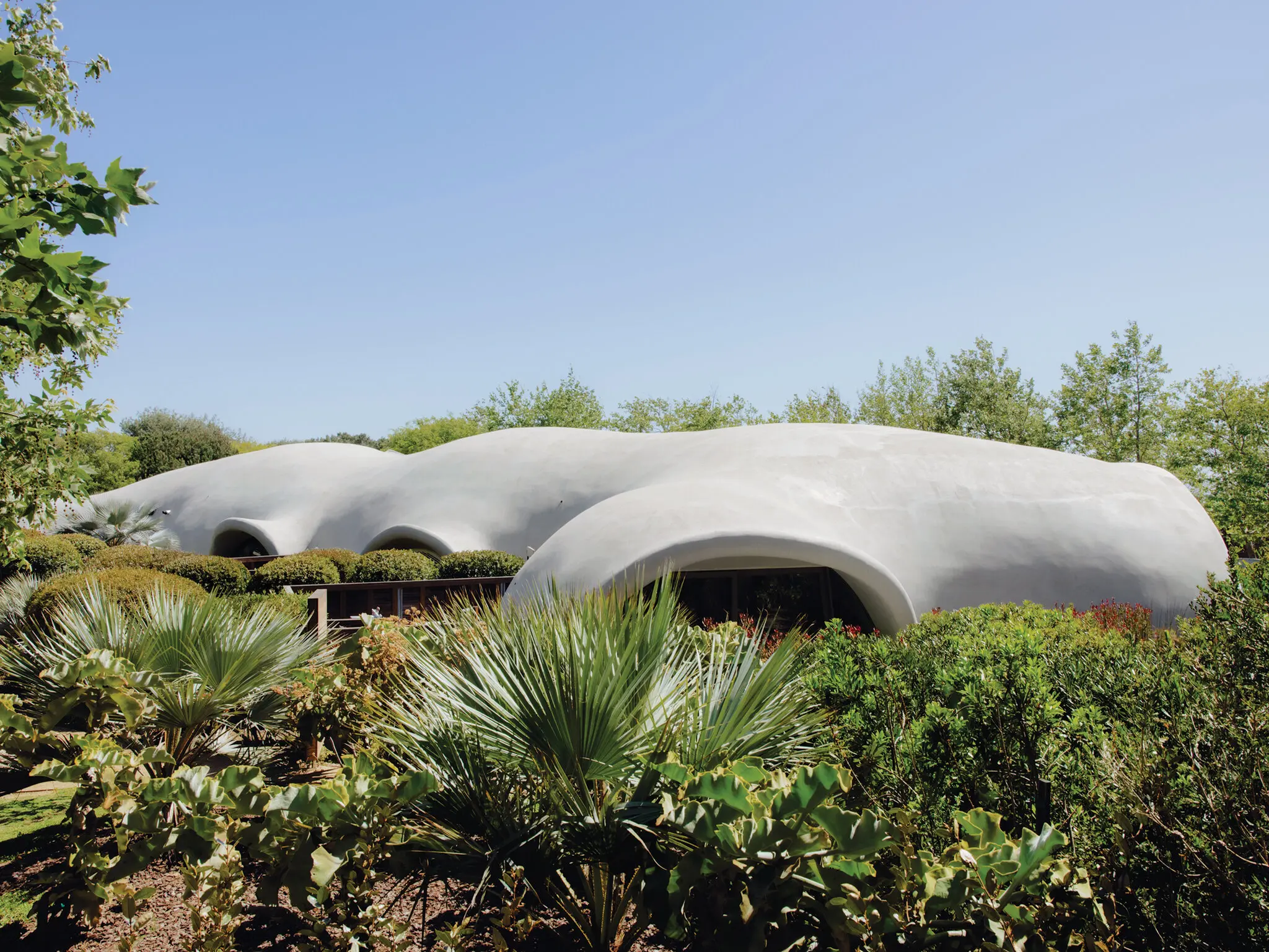
6,500-square-feet in size, the Binishell hides amongst the landscape.
Image courtesy of: The New York Times Style Magazine, photographed by: Joyce Kim
In time, the creator’s son, a Beverly Hills-based architect, reimagined his father’s design. Nicolò hoped to figure out a better way of building Binishells; even though the architecture was extremely prevalent throughout the world. For example, Binishells were used as grain silos in Afghanistan’s desserts and as schools in New South Wales, Australia. The structures were also erected as homes, libraries, shopping centers, and gyms.
However it was designing Robert Downey Jr.’s home in Malibu that brought Binishells renewed fame. In 2015, the Downey’s asked Nicolò to build them an individual structure where they would be able to entertain and house guests.
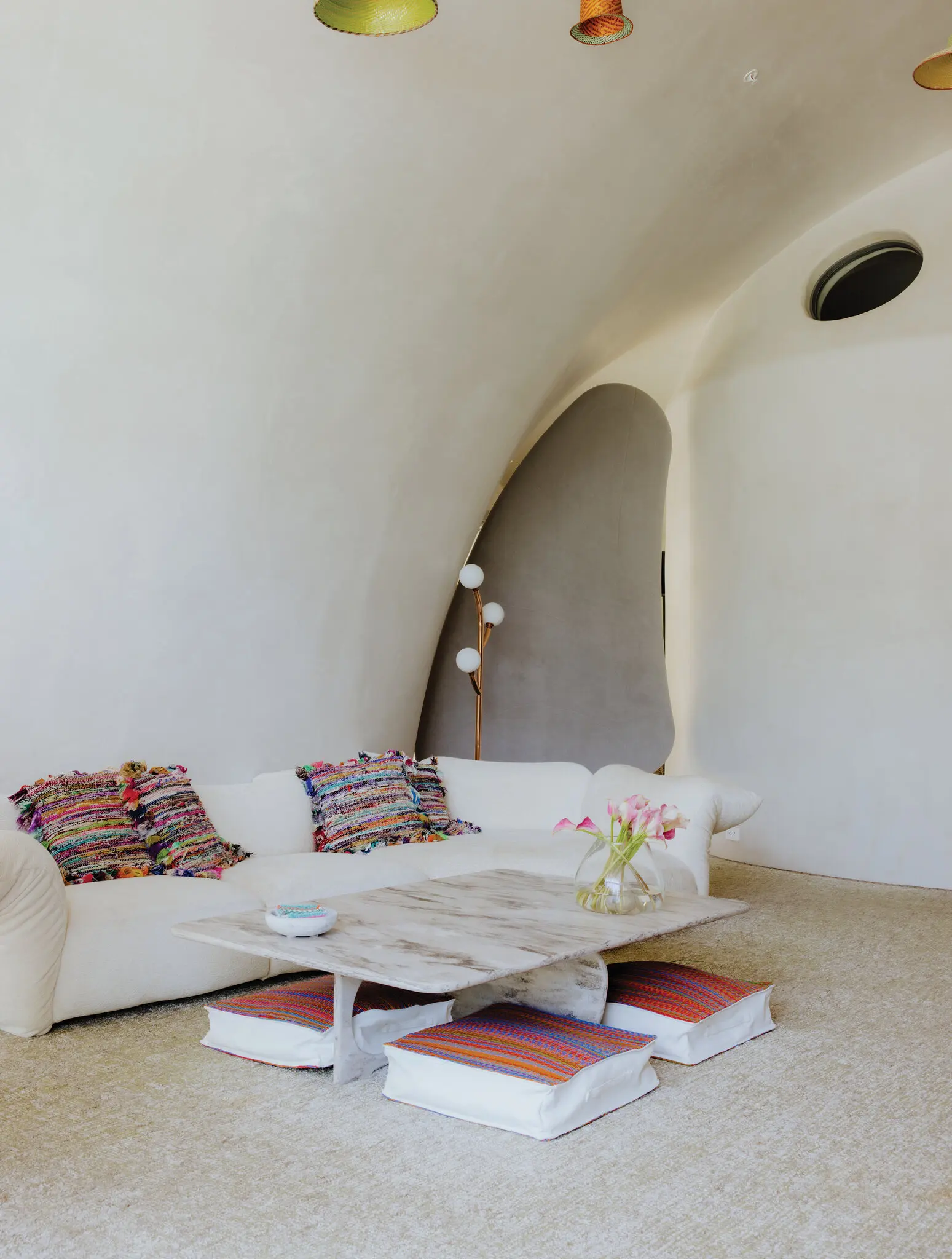
A view into the living room.
Image courtesy of: The New York Times Style Magazine, photographed by: Joyce Kim
At the time, Nicolò was working on a Binishell in a remote spot in Joshua Tree, California. Putting up the structure was the easy part; however, even the construction crews were not sure the structure would be able to withstand the effects of time. Inflating the neoprene bladder with air was followed by covering it in a thin coat of reinforced spray-on concrete.
Interestingly, the Downey’s did not know what to do inside the Binishell. Without interior walls, the plaster-finished gypsum room dividers stopped short of the curved ceiling. As such, panes of soundproof glass were added for privacy. An oddity from outside, it is truly hard to tell whether the 6,500-square-foot structure is more prehistoric or futuristic.
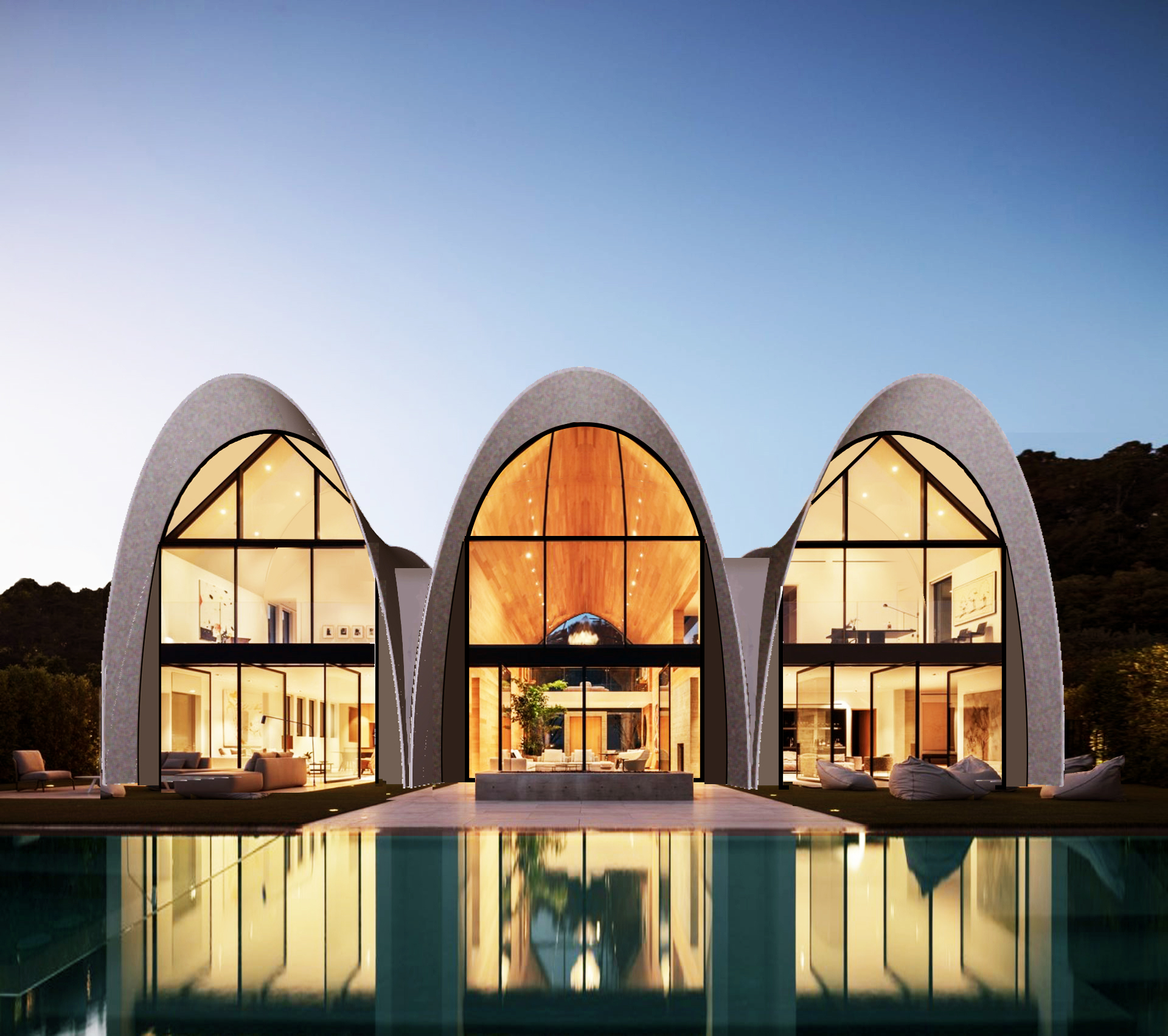
An example of a System E structure. The saddle-shaped vault with double curves makes for a very flexible blueprint. The structure can be built as small as 400-square-feet and as large as 1,000-square-feet. System E can also be two stories tall, and combined with another Binishell to make a larger structure.
Image courtesy of: Binishells
Specifically for the Downey’s, it was important that the project was environmentally conscious. In addition to many other factors, Binishells are quite efficient in many aspects. The structures can be easily erected using locally-sourced materials and without a lot of (courtesy of an article in ArtNet by Laurie Pike), “specialized machinery.”
In addition, they are very adaptable, rather than “forcing the ground to accommodate the house, the house accommodates the landscape.” Better able to adapt to climate variables and terrain variations, Binishells are both innovative and innovating.
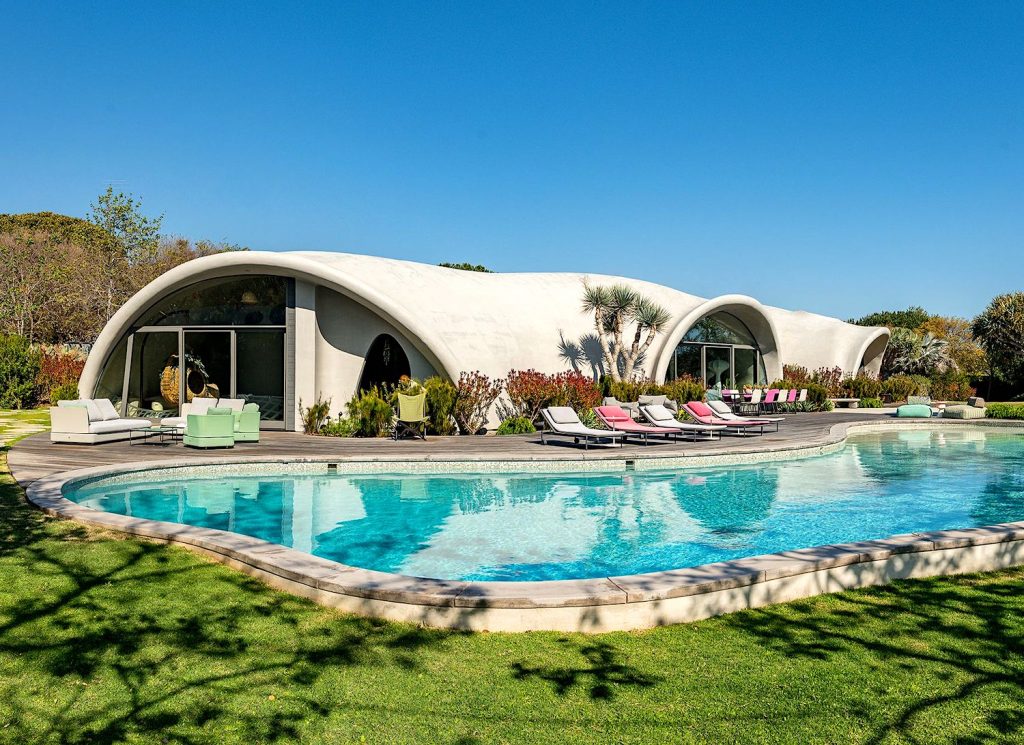
The exterior of Robert Downey Jr.’s Malibu abode.
Image courtesy of ArtNet (photograph courtesy of: Nicolò Bini)
Binishells have been in existence for almost eighty years, and with a philosophy rooted in nature, now might be the time for this architectural style to “take off.” As a construction technology company, Binishells, with the 2009 re-branding, is a concept that appears to check all the boxes in today’s technology-driven, environmentally-conscious world.
Courtesy of the company’s website, they “strive to arrive at beauty by more closely emulating nature’s efficiency.” Nicolò continues, “With 25% of the world’s population living in sub-standard shelters, this is where we feel we can have the most impact.” And if nothing else, surely that is a way for Binishells to succeed where other architectural methods have failed.
